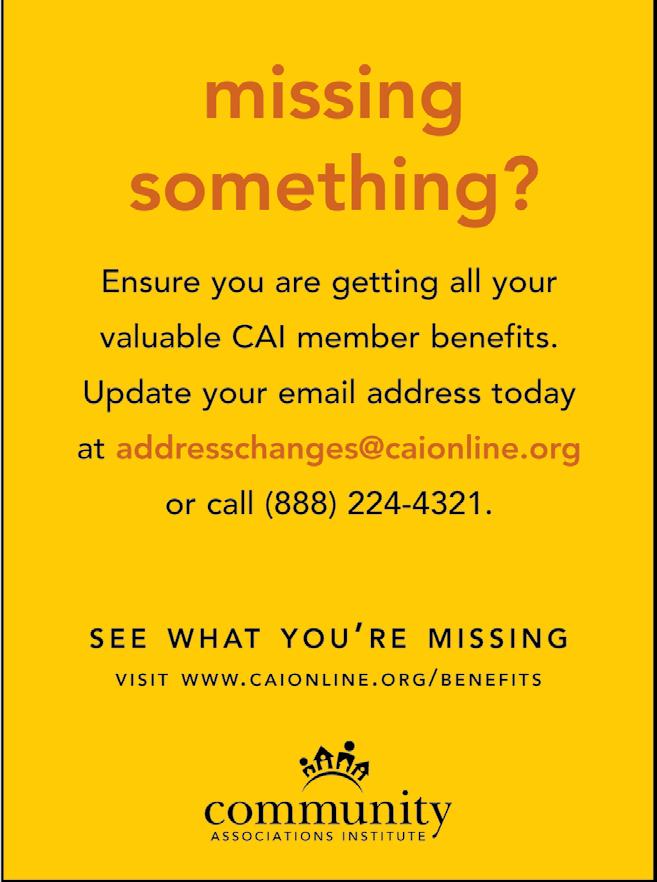

LIVING Community
TOPIC
CHAPTER EXECUTIVE DIRECTOR
Joe Napoli
CAI SOUTHEAST FLORIDA BOARD OF DIRECTORS
Jason Schoenholtz, CAM, CMCA, AMS, PCAM (President)
Diana Zayas-Bazan, CAM, CMCA (President-Elect)
Sebastian Martinez, CAM, CMCA (Treasurer)
Diana Kuka (Secretary)
Michael Poorman, MBA, PCAM (Past-President)
David Bermudez (Director)
Roberto Blanch, Esq. (Director)
Jane Bolin, Esq. (Director)
Debbie Ellison (Director)
Dr. Marcelo Martinez, CAM, CMCA (Director)
Fabiola Bens (Director)
CHAPTER COMMITTEES
Membership Committee
Homeowner Leader Committee
Community Manager Committee
Business Partner Committee
Education Committee
Events Committee
Young Professionals Committee
CORRESPONDENCE (CHAPTER & MAGAZINE) (Sales, Marketing, Advertising, Creative, Subscriptions)
Joe Napoli
CAI-SE Florida Chapter 304 Indian Trace, Suite 538 Weston, Florida 33326 954-816-0661 | ced@cai-seflorida.org
CAI-SEFL Chapter Website: www.cai-seflorida.org
National Website: www.caionline.org
READER COMMENTS & ARTICLES WELCOME
Columns and ideas from all of our Chapter members are always welcome. Send submissions in Microsoft Word format to: ced@cai-seflorida.org. Articles appearing in Community Living reflect the author’s opinion and not necessarily that of CAI. Acceptance of advertising does not constitute an endorsement of the product or service.
Community Living is published quarterly by the Southeast Florida Chapter of the Community Associations Institute
This publication attempts to provide CAI’s membership with information on community association issues. Authors are responsible for developing the logic of their expressed opinions and for the authenticity of all presented facts in articles. CAI does not endorse or approve statements of fact or opinion made in these pages and assumes no responsibility for those statements. This publication is issued with the understanding that the publisher is not engaged in rendering legal, accounting or other professional services. If legal advice or other expert assistance is required, the services of a competent professional should be sought.
Q3 | 2025 Contents
From the Chapter President
Chapter Events
CAI Education Opportunities
New Chapter Members
Understanding the Impact of HB 913 on Condo Reserves
Top Threats to Your Asphalt Roads & Parking Surface
From Complaints to Confidence: A Board President’s Guide
The Cost of Choosing the Lowest Bid
The Impact of Reserve Studies on Property Value
A Property Manager’s Guide to Commercial Roofing Contractors
Preparing for the Federal Reserve’s Interest Rate Cuts
Why HOA Elections Shouldn’t Last More Than Three Weeks
What is CAI? OVER 50,000 MEMBERS AND GROWING!
Community Associations Institute (CAI) is a national organization dedicated to fostering vibrant, competent, harmonious community associations. For more than 50 years, CAI has been the leader in providing education and resources to the volunteer homeowners who govern community associations and the professionals who support them. Our members include community association volunteer leaders, professional managers, community management firms, and other professionals and companies that provide products and services to associations. Our local chapter serves over 630 members with annual events including Mini Expos, Golf Tournament, CAM & Board Member Education events and so much more.

Become a Member!
Community Associations Institute is committed to making diversity, equity, and inclusion a core aspect in our membership, on our staffs, and within the community association housing model at large. We firmly believe in the unique strengths of every individual and that diversity makes organizations more successful and communities more fulfilling. By actively cultivating diversity, we benefit from a vastly richer mix of ideas, perspectives, and life experiences that expand our thinking and our possibilities. We strive to foster a culture of discovery, innovation, and service as we continue to focus on our mission to build better communities.
At the Community Associations Institute Southeast Florida Chapter, diversity, equity, and inclusion stands for more than just a goal or quota. We strive to create an environment that reflects the various members we serve and where everyone feels empowered to bring their full, authentic selves. Together, we continue to build an inclusive culture that encourages, supports, and celebrates the diverse voices of our community.

Diamond Sponsors
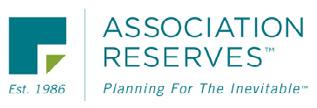


Platinum Sponsors


Gold Sponsors















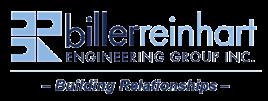
Management Company Sponsors
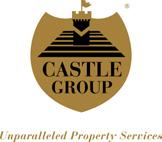

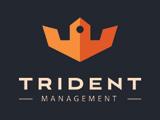
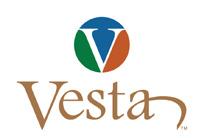
Become a Chapter Sponsor!



It’s the fast track to community association decision-makers! Every member of CAI Southeast Florida enjoys the opportunity of networking with community association decision makers. Becoming a Chapter Sponsor invests in your local Chapter and elevates your brand even more by being continuously recognized at Chapter events and through Chapter communications. Every sponsor receives a nice discount when they reserve for events, including expo booths and golf tournament entries. Learn which sponsorship works best for you. Scan the QR code or visit cai-seflorida.org/event/chapter-sponsors-2025.
FROM THE CHAPTER PRESIDENT

BY JASON SCHOENHOLTZ, CAM, CMCA, AMS, PCAM CEO & CO-FOUNDER, TRIDENT MANAGEMENT & CHAPTER PRESIDENT
Aswe move through the second half of the year, I continue to be inspired by the energy and dedication of our chapter and the broader Florida community. This past quarter has been filled with meaningful moments that reflect the strength of our shared mission and the power of collaboration.
One of the highlights was our unforgettable day of education in the Florida Keys. Surrounded by sunshine and sea breezes, we came together not just to learn, but to connect. The setting was paradise, but the real magic came from the people. The members, speakers, and volunteers who made the event so impactful. If you missed it, I encourage you to check out the recap on our LinkedIn page.
Another milestone worth celebrating was the in-person Florida Chapter meet-up in Tampa this July. For the first time in years, all eight Florida chapters gathered under one roof. It was a powerful reminder of what we can achieve when we come together. The conversations were rich, the connections meaningful, and the groundwork was laid for future collaboration. I’m excited to see us working as one united team, amplifying our impact across the state.
The very next day, I had the honor of representing our chapter as
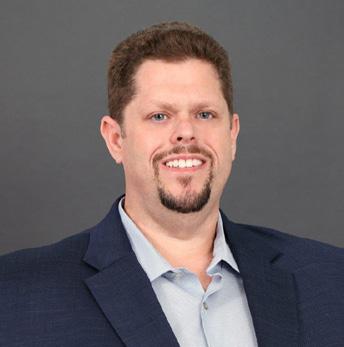
of our three delegates to the Florida Legislative Alliance during our annual pre-session planning. Alongside my esteemed delegates from across the state, our dedicated lobbyist Travis Moore, CAI staff including Emily Jennings, and our new CEO Dawn Bauman, we began shaping the agenda for the 2026 legislative session. Dawn’s leadership continues to inspire confidence, and I’m proud to be part of a team so committed to protecting and advancing our communities.
Looking ahead, I want to remind everyone about two important upcoming events. First, our Homeowner Leader and CAM Workshop is just around the corner. This is a fantastic opportunity for education and networking. Details can be found on our chapter’s website, caiseflorida.org. Mark your calendars for our End-of-Year Gala on Friday, November 21st at Jungle Island. It promises to be a night to remember!
As always, thank you for being part of this journey. Your involvement is what makes our chapter thrive. Whether you’re attending events, volunteering, or simply staying informed, you are helping shape the future of community associations in Florida. Let’s keep building something great together.
HOMEOWNER LEADER & CAM Workshops & Expo
Lunch, Vendor Expo & Happy Hour


Thursday, September 25 | 9:00 a.m. - 3:00 p.m.
Le Méridien Hotel in Dania Beach
Join CAI-SEFL for a daylong workshop and professional education for Homeowner Leaders and CAMs, along with an expo for our Business Partners. Sponsorships available! More details available on the event webpage on cai-seflorida.org!
EDUCATION WORKSHOPS
Homeowner Leader Workshop Highlights:
» Financial Literacy & Transparency
» Recordkeeping, Levying of Fines, Notice & Meeting Requirements
» A Legislative Update on to understand the latest laws impacting communities and what may be in store
» Expert Legislative Advocacy Panel to discuss what’s being done and answer your questions
CAM Workshop Highlights:
» Hot Topics for Today’s Managers: Responsible Use of AI, Managing Special Assessments, Covenant Enforcement & Compliance, Dealing with Pressure from Board Members
» Effective Delegation & CAI Designations
» Capital Projects Done Right – Improve Safety, Reduce Costs, Increase Efficiency
» Expert Panel Q&A on Capital Projects & Improvements













Chapter News
BY JOE NAPOLI, CHAPTER EXECUTIVE DIRECTOR
We continue to receive outstanding feedback about our magazine, and I want to sincerely thank our members who contribute such insightful, relevant, and practical articles. As an organization whose primary mission is to provide education, resources, and support, Community Living is one of the most valuable tools we have to share knowledge across our community. It is your expertise and contributions that make each edition so successful.
This past quarter, one of the highlights was our exciting return to live events in the Keys—and what a success it was. We enjoyed a full day of learning, networking, and fun in Paradise, with separate workshops tailored for Community Managers and Homeowner Leaders. It was inspiring to see such strong engagement, and I extend a heartfelt thank you to everyone who attended. Of course, none of this would have been possible without our generous sponsors, who consistently make our events so special. Be sure to check out the event photos featured in this edition.
Looking ahead, we have an action-packed schedule as we close out the year. Don’t miss our signature event, the Homeowner Leaders/CAM Workshop & Mini Expo on September 25th at Le Meridien in Dania Beach. This day promises relevant certification topics for Homeowner Leaders, timely hot-topic sessions and CEUs for CAMs, plus a full day of networking, breakfast, lunch, and a celebratory Happy Hour to wrap things up.
In addition:
• October 23rd: Our Young Professionals will once again host the Halloween Party, which is guaranteed to be a fun-filled
evening after the success of last year’s event.

• November 5th: We will hold our Board of Directors Elections, a vital opportunity for shaping the future of our Chapter.
• November 21st: Our spectacular Annual Gala & Awards Ceremony at the stunning Jungle Island. This evening will honor those who have gone above and beyond for our Chapter while providing a festive night of entertainment and connection.
Make sure to go to our website at cai-seflorida.org for more information and to register or sponsor these events.
And behind the scenes, our Board of Directors will meet in October for our annual Strategic Planning Session, ensuring that we continue building on our momentum and setting strong priorities for the year ahead.
I also want to take a moment to warmly welcome our new members. Our Chapter’s membership has now grown to over 640 members and counting, a testament to the tremendous value, resources, and opportunities our community provides. This growth is exciting, but it also challenges us to keep expanding our reach. I encourage you to bring a colleague, friend, or peer to one of our events—they’ll quickly see the benefits of being part of CAI Southeast Florida.
Thank you for keeping our Chapter so vibrant, dynamic, and engaged. With your continued participation, support, and enthusiasm, the best is yet to come. I look forward to seeing you at one—or many—of our upcoming events!

CHAPTER EVENTS
Calendar of Events
More details regarding upcoming events will be posted to cai-seflorida.org under the “Events” tab. Check back regularly for the most up-to-date information. Please be sure to register for all events in advance, as we need an accurate head count for space and food purposes prior to the event. All event details are subject to change.
SEPTEMBER 2025
• Thursday, September 25: HOL/CAM Workshop & Expo at Le Méridien Hotel & Convention Center in Dania Beach from 9:00 am - 3:00 pm. We’ll be having a daylong workshop and professional education for Homeowner Leaders and CAMs, along with an expo for our Business Partners. We’re offering the required Board Certification Course for Homeowner Leaders (HOA Board Members). Bring your CAMs and Homeowner Leaders/Association Board Members! The Management Company who has the most CAMs attending and the most Association Board Members that they manage attending will win the following: A Reserved table of 10 at the Annual Gala at no cost; Recognition at the HOL/CAM event and Gala as well as all promotional material for the Gala; A one page ad in our Magazine at no cost; and Shout out on Social Media. Business Partner Sponsors will have a valuable opportunity to engage directly with Community Association Managers and Homeowner Leaders throughout the event!
OCTOBER 2025
• Tuesday, October 14: Educational Webinar
• Thursday, October 21: Board of Directors Strategic Planning
• Thursday, October 23: Young Professionals Halloween Party from 7:00 - 10:00 pm. Get ready for a night of thrills and chills! Whether you’re a ghost, goblin, or superhero, there’s something for everyone! There will be a costume contest, music & dancing, delicious treats and spooky drinks, and mysterious networking. Make new connections in a fun, costumed environment. Complimentary for active CAMs and Homeowner Leader members; $75 for Business Partners; and $125 for non-members. Sponsorship opportunities are available for $950 each! Check out the website for all the details.
• Tuesday, October 28: Hot Topics Education Event in Miami
NOVEMBER 2025
• Wednesday, November 5: Annual Election of Directors
• Thursday, November 6: Homeowner Leader Roundtable Event
• Wednesday, November 12: Educational Webinar
• Tuesday, November 18: Board of Directors Meeting from 8:3010:00 am via Zoom
• Friday, November 21: Annual Gala & Awards Dinner - “Great Gatsby” style at Jungle Island in Miami from 7:00 - 11:00 pm. Step into the roaring ‘20s set against the unique, lush, ecofriendly backdrop of Jungle Island! Get ready for a dazzling evening of live music, signature cocktails, dinner, dancing, casino games, a costume contest, photo booth fun—and so much more! Dress to impress in your finest ‘20s fashion: think flapper dresses, feathered headbands, tuxedos, suspenders, fedoras, and strings of pearls. We’ll also be recognizing the stars of our chapter—those extraordinary members who went above and beyond in their dedication and support throughout the year. This is the can’t-miss event of the season—glitz, glamour, and good times await! Tickets and sponsors will be limited. Tickets are complimentary for CAMs and HOLMembers; $200 for Business Partner Members; and $250 for Non-Members.
DECEMBER 2025
• Tuesday, December 2: Hot Topics Education Event in Broward
• Tuesday, December 16: Board of Directors Meeting & New Board Member Transition from 8:30 - 10:00 am via Zoom
JANUARY 2026
• Monday, January 26: Annual Golf Tournament at Trump Doral in Miami. Golfers can register as a foursome for $1,700. Those who would like to attend the event, but are not sponsoring may register for lunch-only tickets. Business Partners (Chapter members only) are $350. CAMs (do not need to be a Member, but must be active CAM) and Homeowner Leaders (do not need to be a Member) are complimentary, but registration required.
Chapter Website Account
To register for Chapter events, you will need to create an account on the website if you don’t already have one. A REGISTRATION PASSCODE IS REQUIRED. Visit cai-seflorida.org/my-account to set up your account and enter SoutheastFloridaCAI under Registration Passcode. Contact the Executive Director at ced@cai-seflorida.org or 954-816-0661 with questions.

Education Opportunities
CAI offers many online learning opportunities (click on the dates below to register or obtain more information) that lead to professional credentials. View the Education Catalog for additional resources.
» September 24: The Art of Insurance Bidding 2.0: A Sophisticated Approach for Today’s Market (Webinar)
» September 25-26: M-100: The Essentials of Community Association Management (Live Virtual Class)
» October 9-10: M-205: Risk Management (Live Virtual Class)
» October 23-24: M-206: Financial Management (Live Virtual Class)
» October 29: October Webinar (More details coming soon)
» November 6-7: M-100: The Essentials of Community Association Management (Live Virtual Class)
» November 13-14: M-330: Advanced Insurance & Risk Management (Live Virtual Class)
» November 19: November Webinar (More details coming soon)
» November 20-21: M-202: Association Communications (Live Virtual Class)
» December 4-5: M-203: Community Leadership (Live Virtual Class)
» December 11-12: M-100: The Essentials of Community Association Management (Live Virtual Class)
» December 17: December Webinar (More details coming soon)
Stay on Top of Your Game with Professional Credentials
CAI education and credentials help you lead better and achieve your desired business results. Click here to learn more.
General Registration Information
Courses are open to all. Register online four weeks in advance for live classroom courses and receive a $25 discount. Seating is limited. Early registration is strongly recommended. Click here to learn more.
Business Partner Essentials
The Business Partner Essentials is an online course designed to help CAI-member product and service providers better understand CAI, community associations and the industry at large. Individuals who pass the course and maintain CAI membership earn the CAI Educated Business Partner member distinction. By taking this course, you will distinguish yourself as an Educated Business Partner and can share your accomplishment with your current and potential clients. Click here to learn more.
COMMUNITY ASSOCIATION BANKING
At First Citizens Community Association Banking, we understand your unique industry. It’s why we match market-leading products with a relationship-based approach to banking designed to help you reach your goals. First Citizens Bank. Forever First.®
Jayme Gelfand, VP, Regional Sales Officer jayme.gelfand@firstcitizens.com | 561-251-1980








NEW CHAPTER MEMBERS

New and Returning CAI-SEFL Chapter Members from June 26, 2025 to September 11, 2025
BUSINESS PARTNERS MEMBERS
Atlantic Roofing & Waterproofing Inc.
Netalie Abrams
Bright Bookkeeping & Accounting
Josue Jean jourdain
HiQ Data Corporation
Benjamin Servidio
Multifamily Amenities, LLC
Kelley Vanhorn
Palm Build
Jimmy Orjuela
Performance Roofing and Impact Windows
Alex Hutchison
Servbank
Michael Laskey
Squeegee Squad
Stella Ruegsegger
Verify Screening Solutions Inc.
Gabriella Prado
Village Management Software
Michael Renaldo
NATIONAL BUSINESS PARTNER
MEMBERS
Smartwebs
Robert Holte
MANAGER MEMBERS
Community Association Consulting Experts
Mirlanda Belizaire
Stella Burshtein
Andrew Constantinou
Andrew J. Reina Association Services of Florida
Thalita Arias, CMCA Atlantic and Pacific Management
RealManage
Rachel Canela
Vanessa Escobar
Diego Flores
Sharnel A. Hearn
Jorge Addiel Hernandez
Ximena Lama
Jason Lawrence
Brad Leachy
Patricia Lewis
Lynda Maldonado
Ashley Marriott
Barbara Martinez
Hector Mendez
Thaeliz Pildain
Vera Rowe
Maria M Salazar
Marilyn Samedy
Edward Thompson
Patricia N Urlass
Rami Abbadi
MANAGER MEMBERS CONTINUED
Kenly Agledor
Victoria Bernal
Lynne Marie Cotton-ne
Wayne Freeman
Gisselle Home
Jose F Matto
Mauricio Muela
Aaron Papowitz
Yansey Valdes
MANAGEMENT COMPANY MEMBERS
Bespoke Custom Management & Consulting
Lisa Ann Gray
Virtus Property Management Services
Tanya Hearne
VOLUNTEER LEADER MEMBER
El Mar Condominium
Lawrence Darkes



2025 CAI Congressional Advocacy Summit - Registration Launched!
CAI is thrilled to host our annual CAI Congressional Advocacy Summit on Capitol Hill in Washington, D.C. on Thursday, November 6th! This exciting event is exclusively for CAI members and is free. Together, we will meet with members of Congress and their staff, advocate for industry federal legislative priorities, and represent the interests of community associations and their residents nationwide.
CAI’s 2025 Congressional Advocacy Summit is the premier advocacy event of the year for the community association housing model! Informative and inspirational, the CAI Congressional Advocacy Summit is your chance to speak with federal lawmakers and their staff face-to-face and help advance CAI’s public policy priorities.
Participants will also witness expert presentations on a variety of critical topics influencing the community association industry and network with their peers and business partners.
Join us on November 6, 2025 in the nation’s capital. You won’t want to miss it! Registration is FREE and includes:
» Admission to catered Breakfast Briefing
» Bus transportation from The Canopy Hilton to Capitol Hill
» Meetings scheduled with your members of Congress
» Guidance and support from CAI staff
» Bus transportation from Capitol Hill to rooftop reception at Cornerstone Lobbyist Headquarters
» Admission to celebratory catered rooftop reception at Cornerstone Lobbyist Headquarters
TENTATIVE 2025 CONGRESSIONAL ADVOCACY SUMMIT SCHEDULE
» 7:30 - 8:00 am: Bus to Capitol Hill
» 8:00 - 8:15 am: Pictures on Capitol Hill
» 8:30 – 10:00 am: Breakfast Briefing
» 10:00 am - 12:30 pm: Meetings with House of Representatives
» 12:30 - 1:30 pm: Lunch
» 1:30 - 4:00 pm: Meetings with Senate
» 4:00 - 4:30 pm: Transportation to The Wharf
» 4:30 - 6:00 pm: Rooftop Reception and Debrief
For those joining CAI from out of town, a limited number of sleeping rooms has been booked at The Canopy by Hilton Washington, DC | The Wharf (975 7th Street SW, Washington, DC 20024 - (202) 488-2500). Click here for more information and to REGISTER.
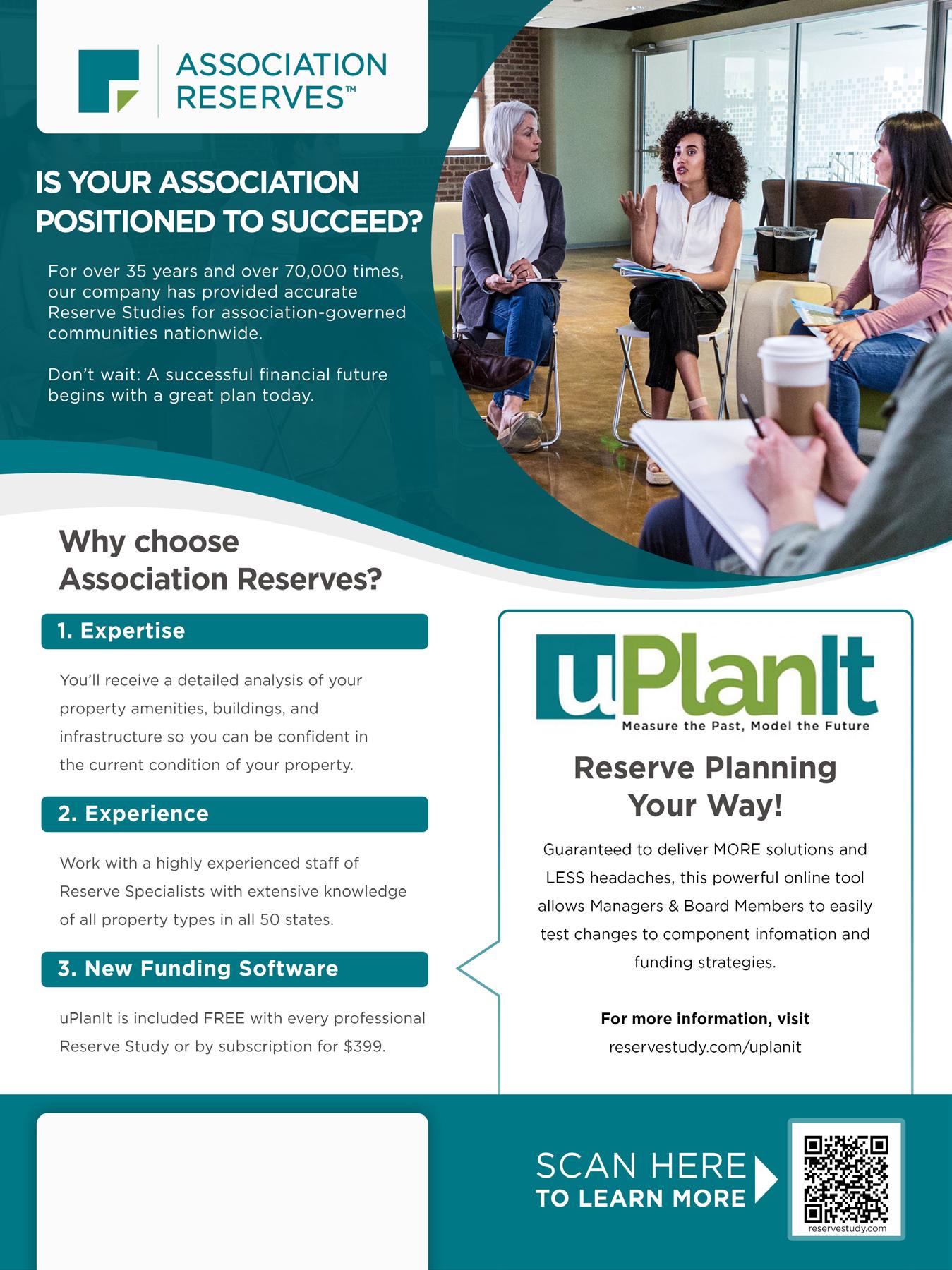







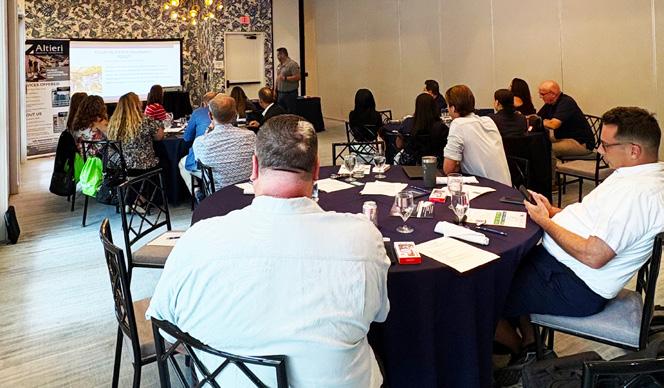

THANK YOU SPONSORS!
FLORIDA KEYS
Day of Education
July 24, 2025
SIGNATURE SPONSOR
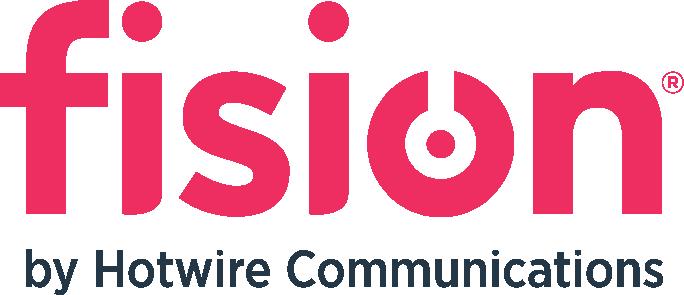
LUNCH SPONSOR LUNCH SPONSOR
BREAKFAST SPONSOR
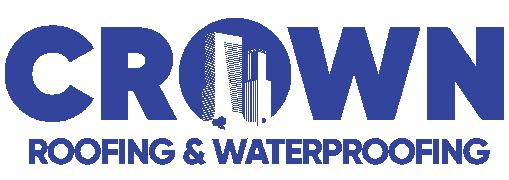
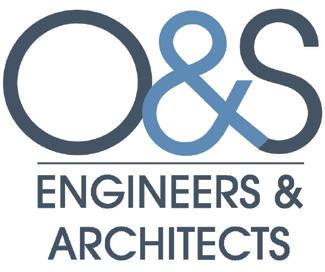
EVENT SPONSOR GRAND PRIZE SPONSOR

Understanding the Impact of HB 913 on Condominium Reserves RESERVES
BY SUNDEEP JAY, SENIOR RESERVE SPECIALIST, J.R. FRAZER INC.
Condominiums across Florida are beginning to feel the effects of HB 913, the state’s latest legislative update. Among the changes, one key provision raises the minimum threshold for a deferred maintenance item to be included in reserves from $10,000 to $25,000. While this may seem straightforward, the implications for budgeting and long-term planning are more complex than they appear.
Previously, any item or system costing $10,000 or more needed to be included in a reserve study. Now, that threshold has more than doubled. Some may assume this means fewer items must be included, but the reality isn’t so simple. Many components, while individually under $25,000, are part of a larger system that exceeds the threshold. For instance, individual pieces of pool equipment—like motors or pumps—may cost between $1,200 and $2,400 each, but together they can total well over $25,000. If one component fails, it can shut down the entire system, proving that the whole system needs to be considered, not just the individual parts.
This has led to confusion among board members who request to remove items like pool equipment from reserve studies, arguing they are routinely paid through the operating budget. However, even if the total cost of a system doesn’t meet the new legal threshold, it is still a physical asset that will eventually need repair or replacement. Ignoring such items for the sake of reducing annual reserve contributions can be shortsighted and may even violate the board’s fiduciary duty. When preparing the annual budget, boards should take into account not just operating expenses—like insurance, landscaping, or management fees—but also all physical assets, regardless of individual price tags. Every item will eventually wear out. Budgeting for these
replacements in advance helps avoid unexpected costs and special assessments down the line.
Operating budgets tend to be relatively stable, fluctuating mainly due to inflation or contract changes. Reserves, on the other hand, are more variable. They must be updated regularly to reflect the condition of assets and the timing of future repairs or replacements. The more thorough and proactive the reserve planning, the fewer surprises a board and its members will face.
In short, HB 913 doesn’t mean boards should exclude items under $25,000 from reserve planning. Instead, it highlights the importance of understanding how systems work together and why proper funding is essential. Being diligent today ensures financial stability tomorrow.


Sundeep Jay is certified as a senior reserve specialist. He has been completing reserve studies and condo/HOA property & flood valuation reports for a little more than nine years with J. R. Frazer Inc. He graduated with a degree in accounting and computer science from the University of Central Florida. Throughout his career, he assisted in building more than 70 to 80 residential homes as a real estate broker while also operating his own mortgage company. For more information, call 561-488-3012, email JRFrazerENT@aol.com, or visit www.JRfrazer.com.
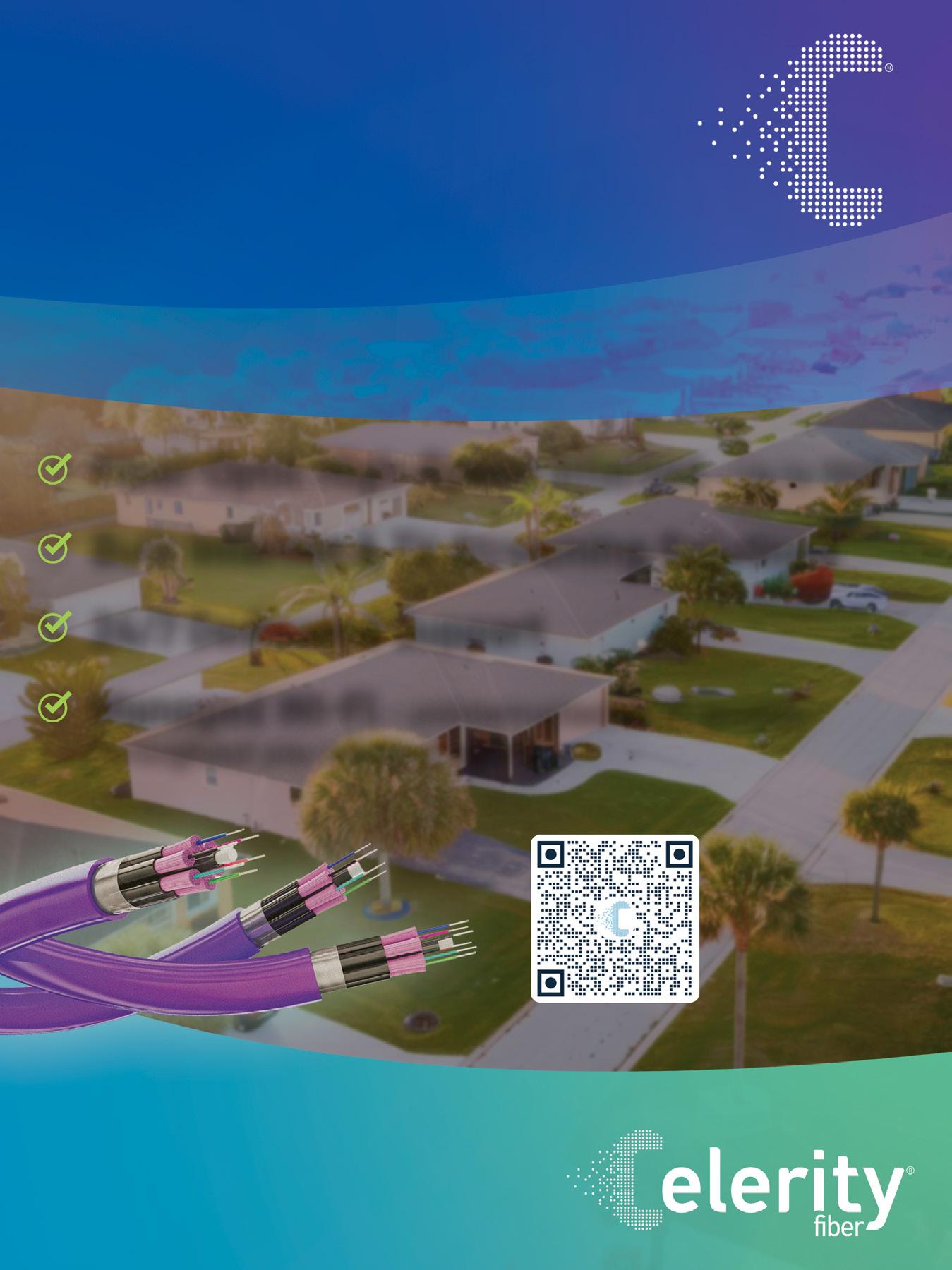


Top Threats to Your Asphalt Roads & Parking Surface and How to Defend Against Them
BY CHADWICK MACKEY, QUALIFIER & CIVIL ENGINEER, DMI PAVING AND SEALCOATING
Awell-maintained asphalt parking lot is essential for both the appearance and functionality of your property. It provides a welcoming first impression, ensures safety for visitors, and supports the longevity of your infrastructure. However, several environmental and man-made threats can damage your asphalt surface over time. Knowing what those threats are—and how to guard against them—can save you from costly repairs down the road.
1. WATER: THE SILENT ERODER
Water is one of asphalt’s greatest enemies. When it seeps into small cracks and crevices, it gradually weakens the surface and foundation, eventually leading to potholes and structural failure. This process accelerates during freeze-thaw cycles in colder regions.
Prevention Tip:
Ensure your parking lot has proper drainage. Regularly inspect and clean catch basins and drains to prevent water from pooling or penetrating the surface.
2. OIL AND GASOLINE SPILLS
Oil, gasoline, and other automotive fluids are common in parking lots—and highly corrosive to asphalt. These chemicals break down
the asphalt binder, softening the surface and causing it to deteriorate rapidly.
Prevention Tip:
Clean spills promptly using absorbent materials. Implement regular power washing and surface cleaning as part of your maintenance routine.
3. TREE ROOTS
Trees may beautify your landscape, but their root systems can be a hidden danger. Roots can grow underneath asphalt surfaces, pushing up the pavement and causing cracks, bulges, and uneven surfaces that become trip hazards.
Prevention Tip:
Plant trees at a safe distance from paved areas and install root barriers to prevent intrusion beneath the surface.
4. HEAVY LOADS AND CONSTANT TRAFFIC
Parking lots exposed to frequent heavy vehicle traffic—such as delivery
Continued on page 22

Castle Group is the premier choice for property management We specialize in serving the finest residential communities. We do not manage an exceptional number of communities, just a number of exceptional ones Who We Serve
Large-Scale Communities
High-Rise & Condominium Communities
Self-Managed Communities Communities in Development
To learn more about how Castle Group can serve your community, visit www castlegroup com or call (954) 792-6000


ASPHALT
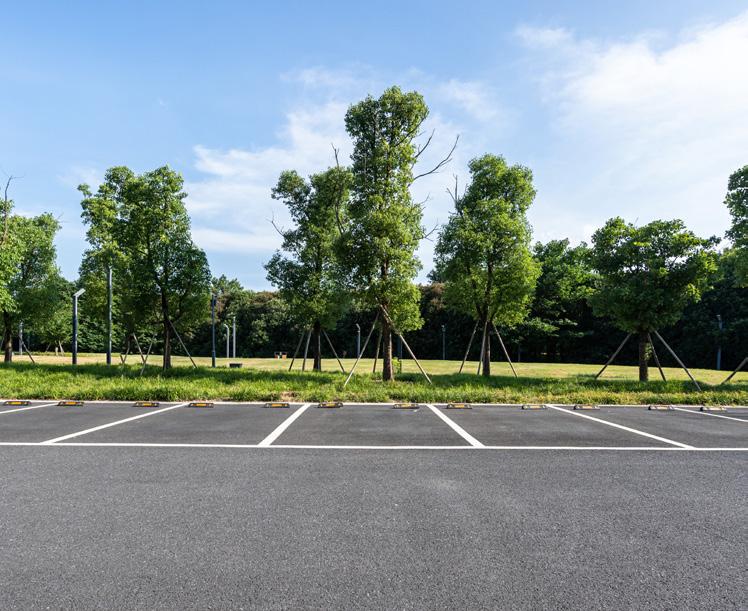
trucks, buses, or construction equipment—face constant stress. Over time, this can cause rutting, cracking, and surface fatigue.
Prevention Tip:
Design your lot to support the expected traffic load. Consider thicker asphalt layers or reinforced pavement in high-traffic zones. Implement load restrictions if possible.
6. SUNLIGHT AND UV RADIATION
Florida’s abundant sunshine might be great for beach days, but it’s brutal on your asphalt. UV rays break down the asphalt binder over time, making the surface brittle, dry, and prone to cracking.
Prevention Tip:
Apply a protective sealcoat every 2–3 years. Sealcoating acts as a sunscreen for your parking surface, shielding it from UV rays and helping preserve its flexibility and strength.
TIPS TO PROTECT YOUR ASPHALT PARKING SURFACE
While the list of potential hazards may seem overwhelming, regular maintenance and strategic planning can keep your asphalt in top condition for years. Here are key measures to protect your investment:
Regular Maintenance
Inspect your parking lot regularly for early signs of damage, such as cracks, small potholes, or drainage issues. Prompt repairs prevent small problems from becoming major—and expensive—failures.
Sealcoating
Sealcoating every few years creates a barrier that shields your asphalt
from water, oil, UV rays, and other damaging substances. It also restores a clean, black finish that improves curb appeal.
Proper Drainage
Ensure your lot slopes properly and has an efficient drainage system to prevent standing water. Water accumulation is often the first step toward serious structural issues.
Clean Spills Promptly
Have materials on hand—like absorbent pads or granules—to deal with oil and chemical spills quickly. The faster you act, the less time these substances have to degrade the surface.
Load Management
If your lot regularly accommodates large vehicles, reinforce hightraffic areas. Using stronger asphalt mixtures or concrete pads in key zones can reduce stress and extend the surface life.
Use Root Barriers
Prevent root-related damage by installing physical barriers between trees and your parking lot. This stops roots from growing under the asphalt and keeps the surface level and safe.
Understanding the threats that can damage your asphalt is the first step in protecting it. Water, UV rays, vehicle fluids, tree roots, and traffic all pose significant risks—but with regular maintenance, proper drainage, and proactive treatment, you can significantly extend the life of your asphalt surface.
Protecting your parking lot isn’t just about aesthetics—it’s about safety, functionality, and long-term cost savings. A well-maintained lot sends a strong message about the professionalism and care you bring to your property.


Chadwick Mackey is a Qualifier and Civil Engineer for DMI Paving and Sealcoating. Chad utilizes his engineering background to help a wide array of clients evaluate their properties for ADA compliance and technical design fixes. He has over 23 years of consulting, civil design, construction estimating, and field experience. He serves as an Expert in Florida ADA Compliance and site upgrade design and construction and is a certified instructor for CEU classes pertaining to asphalt and concrete pavement construction and maintenance. For more information, visit dmipavingandsealcoating.com.

Community Assoction Management
BOARD ISSUES

From Complaints to Confidence: A Board President’s Guide to Handling Condo Owner Issues the Right Way
BY MICHAEL POORMAN, MARIPOSA POINTE AT WESTON TOWN CENTER CONDO ASSOCIATION
TRANSFORMING FRUSTRATION INTO FORWARD MOTION
Complaints are inevitable in condominium life—but how a board handles them determines whether trust is built or broken. As a longtime Florida condominium board president and corporate leader, I’ve seen firsthand how an unresolved issue or delayed response can quietly undermine community confidence.
I’ve had neighbors stop me mid-walk, not to complain—but because they didn’t know who to talk to or whether their concern was being heard. That gap in communication is often where trust erodes first.
Today, boards are under greater scrutiny than ever. With statutory response deadlines, rising transparency expectations, and a more engaged base of resident owners, informal or inconsistent complaint handling isn’t just inefficient—it can expose the board to risk. In some cases, it can even trigger more extreme reactions, such as “throw the bums out” election challenges or recall efforts.
This article is for board presidents, directors, and community association managers who want to build trust, reduce conflict, and lead with accountability—especially those who live where they serve.
WHY COMPLAINT HANDLING DESERVES STRATEGIC ATTENTION
Florida Statutes—particularly Chapter 718—require timely responses to owner inquiries and records requests. But beyond legal compliance, effective complaint tracking also helps:
• Build transparency and trust with residents
• Uncover maintenance gaps or vendor issues
• Identify trends that inform budget and project planning
• Ensure continuity across board transitions
• Prevent small issues from becoming legal disputes or board turnover headaches
When approached with intention and structure, complaint tracking becomes one of the board’s most powerful governance tools. And in an era where AI and analytics are reshaping every industry, community associations can—and should—leverage these same tools to anticipate resident needs and act before issues escalate.
WHY HOMESTEAD OWNERS ENGAGE DIFFERENTLY
Homesteaded owners experience community life differently than absentee investors or landlords. What might seem like a minor issue to one person—such as a slow irrigation leak or a noisy HVAC unit—can feel deeply personal to a full-time resident who lives with it every day.
In my own community, I’ve seen how something as simple as a noisy lawn service or a delay in fixing a broken pedestrian walkway exit gate can escalate—not because residents are unreasonable, but because this is where they live, relax, and raise families.
This difference in perception matters. Boards that overlook the “this is my home, I live here full-time” mindset risk alienating their most invested and vocal stakeholders. Whether you live on-site or not, your board can build trust, demonstrate empathy, and strengthen community support by adopting a clear, consistent, and professional approach to complaint handling.
WHAT OWNERS COMPLAIN ABOUT MOST
The Florida DBPR receives thousands of condominium-related complaints each year. The most common themes include:
• Financial mismanagement
• Common area neglect
• Election or board misconduct
• Records access violations
• Assessment disputes
• Pet, noise, and parking conflicts
These aren’t just legal risks—they’re emotional flashpoints. In our experience, they can often be defused through stronger communication, greater board accountability, and consistently documented follow-through by both management and the board.
8 BEST PRACTICES FOR EFFECTIVE COMPLAINT HANDLING
The following are best practices we’ve developed through real-world trial and error—approaches that have made a meaningful difference in our community’s resident experience.
1. Centralize Complaint Intake
Designate a single email address and website form for all complaints and service requests. We added a dropdown menu on our website’s Contact page to help route submissions efficiently.
BOARD ISSUES
2. Acknowledge Every Submission
Send an immediate “we’ve received your message” confirmation. This simple gesture builds goodwill and sets expectations—especially when resolution may take time.
Early on, we underestimated how powerful that small acknowledgment could be. Residents just wanted to know they were being taken seriously—even if we didn’t have an answer yet.
3. Use a Structured Log
We track the following fields in a shared digital log:
• Date received
• Owner/unit
• Issue category
• Assigned party
• Target resolution date
• Final disposition
4. Apply Color Coding for Urgency
We use the same “Vendor RAG (Red, Amber, Green) Scorecard” approach for complaint tracking:
• Red = Overdue
• Amber = Due within 3 days
• Green = Resolved
5. Automate Timelines
Using Excel (which we’ve found more robust than Google Sheets), we apply conditional formatting and formulas to flag aging issues and approaching deadlines automatically.

BOARD ISSUES
6. Chart Complaint Trends Monthly
We use pie and bar charts to visualize issues by type, frequency, and resolution time. These reports are reviewed at regular board meetings to uncover recurring themes or vendor performance concerns.
7. Apply AI and Analytics to Spot Patterns Before They Escalate AI tools like ChatGPT and CAM software platforms (e.g., Enumerate) help us analyze complaints more intelligently. We routinely ask:
• “What types of complaints are increasing month over month?”
• “Which units or buildings are generating the most issues?”
• “Which vendors are linked to the most follow-up complaints?”
• “Are there repeat complainants, and what are the patterns?”
• “What’s the average time to resolution—and where are we missing the mark?”
• “Are there seasonal patterns in complaint volume?”
We also use AI to summarize resident surveys, analyze sentiment in emails, and evaluate complaint resolution timelines.
Pro Tip: Add a quarterly “Complaint Analytics Review” to your board agenda. Use it to spot root causes, flag emerging trends, and guide proactive decisions—from maintenance planning to vendor accountability. By using these tools thoughtfully, our board has shifted from reactive to predictive—staying ahead of issues before they become frustrations.
8. Close the Loop
Always follow up with the owner—by email or in person—once a complaint is resolved. A simple, “Is the issue resolved to your
satisfaction?” builds trust and completes the service cycle.
PRO TOOL: A READY-TO-USE COMPLAINT TRACKER
To support fellow board leaders, I’ve created a downloadable Excelbased Complaint Tracking Tool that includes:
• Pre-set issue categories
• Color-coded urgency flags
• Deadline calculators
• Auto-updating visual dashboards
Boards ready to take the next step can use this tracker not only to log complaints—but also as a launchpad for AI-powered insights that highlight patterns, vendor risks, and emerging issues. To request a free copy, email me directly at bod@mariposapointe.com.
LEADING THROUGH ACCOUNTABILITY
Complaint handling isn’t just a task—it’s a test of leadership. Over time, I’ve learned that leadership on a condo board is less about control and more about connection. It’s not just what you decide—it’s how transparently, fairly, and consistently you respond when challenges arise. When your board responds consistently, documents issues diligently, and communicates with transparency, residents notice. You don’t just solve problems—you show that the board is listening and leading.
In Florida’s evolving governance environment, that kind of clarity and professionalism is no longer optional. It’s the new standard for effective, modern community leadership.

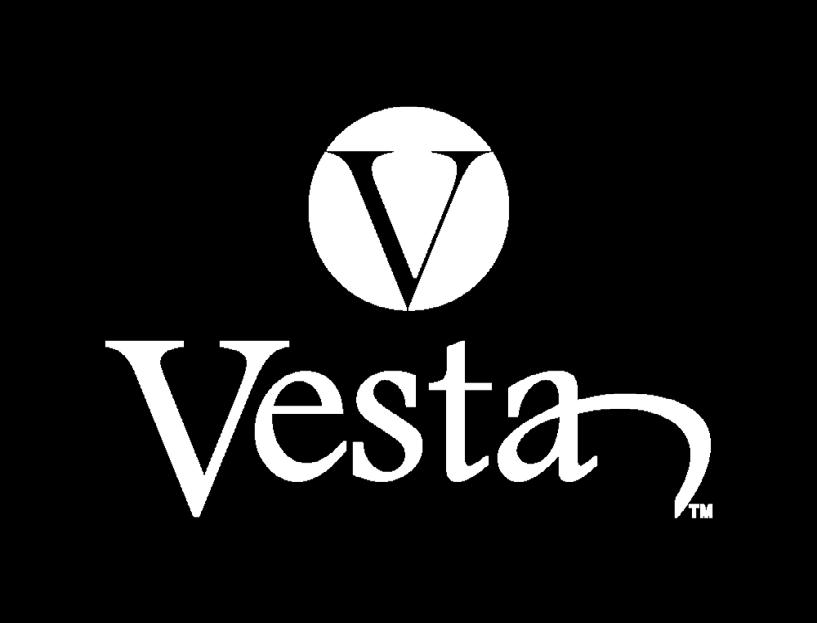




The Cost of Choosing the Lowest Bid: Why Cheap Often Becomes Expensive
BY LUIS RODRIGUEZ, BUSINESS DEVELOPMENT MANAGER, ASSOCIATION SERVICES OF FLORIDA
When it comes to selecting vendors or management companies, many community association boards default to one deciding factor: price. The thinking goes, “If we can get the same service for less, why wouldn’t we?” Unfortunately, this mindset often leads to frustration, hidden costs, and diminished service quality. In reality, choosing the lowest bid can end up costing your community far more in the long run.
As a Business Development Manager for Associa Florida, I speak with boards every week who regret chasing the cheapest option. What they saved upfront was quickly erased by poor performance, additional repairs, and the expense of switching providers mid-contract. Let’s unpack why this happens and how your board can make smarter, value-based decisions.
THE PRICE ILLUSION
Price is tangible, easy to compare, and seemingly objective. But it’s also misleading when it’s the only factor in the decision-making process. The lowest bid rarely accounts for:
• Quality of Materials and Labor: Lower costs may mean inferior products or underqualified staff.
• Scope Gaps: Low bids sometimes exclude critical services, which are then billed separately at premium rates.
• Staffing Levels: Reduced fees can mean fewer hours on-site or overworked managers juggling too many communities.
What looks like a bargain on paper may simply be a stripped-down version of the service your community truly needs.
THE DANGER OF TREATING VENDORS LIKE COMMODITIES
Another trap boards fall into is treating vendors and management companies as interchangeable commodities—assuming that as long as the scope of work looks similar, the results will be the same. This approach ignores the human factor: expertise, communication, and dedication vary greatly from one provider to another. Choosing solely on price assumes every vendor delivers identical value, which is rarely true.
When boards commoditize their vendor relationships, they risk losing the benefits of partnership. Strong vendors bring proactive solutions,
anticipate challenges, and often go above and beyond the written contract. These qualities are not captured in a simple line-item price comparison.
THE HIDDEN COSTS OF CHEAP DECISIONS
Opting for the lowest bid often comes with hidden expenses that only reveal themselves after the contract is signed:
1. Redoing Poor Work: Whether it’s a landscaping project done with cut-rate materials or a maintenance job handled by inexperienced staff, subpar results lead to rework—and you pay twice.
2. Higher Long-Term Expenses: Using lower-quality products might save money upfront but leads to faster deterioration, more frequent repairs, and increased liability.
3. Administrative Burden: When a vendor underdelivers, the board or management team spends more time overseeing, correcting, or replacing them.
4. Resident Dissatisfaction: Poor service impacts the community’s quality of life, leading to complaints, mistrust, and potential turnover of volunteer board members.
WHY VALUE SHOULD COME FIRST
Shifting the focus from price to value requires evaluating the full picture of what a vendor or management company offers:
• Experience and Expertise: How long have they been in business? Do they specialize in communities like yours?
• References and Track Record: Speak with current clients. Have they delivered on promises? How do they handle challenges?
• Staffing and Support: Will the team assigned to your community be experienced, accessible, and well-supported by leadership?
• Technology and Tools: Are they using systems that enhance efficiency, communication, and accountability?
• Communication Style: Will they be proactive, transparent, and easy to work with?
When boards prioritize these elements, they often find that the company offering the lowest total cost of ownership is not the one with the lowest initial bid.
SMART STEPS FOR SMARTER DECISIONS
If your board wants to avoid the trap of the lowest bid, consider these steps:
1. Define the Full Scope of Work: Be specific about your expectations so every bid addresses the same requirements.
2. Use Weighted Scoring: Assign point values to criteria like experience, references, and staffing—price should be only one factor.
VENDOR PROPOSALS
3. Meet the People: Interview the actual team members who will be working with your community.
4. Ask Scenario-Based Questions: How have they handled emergencies, resident disputes, or budget challenges in the past?
5. Consider Long-Term Fit: Is this a provider you can see building a partnership with for years to come?
A CASE IN POINT
One coastal condominium association I worked with chose a low-bid vendor for their roof repairs. The savings? About $20,000 compared to the next bid. But within two years, water intrusion issues emerged because of improper installation. The repairs and legal fees totaled over $100,000—five times what they “saved” by going cheap.
This story isn’t unusual. The true cost of the lowest bid often shows up months or years later, when it’s too late to undo the damage without significant expense.
Choosing vendors or management companies for your community association is not just a financial decision—it’s a strategic one. While proposals and pricing are important, they should never be the only factors. By evaluating total value, long-term impact, and team capability— and by recognizing that vendors are partners, not commodities—your board can make decisions that protect your community’s budget, reputation, and quality of life.
In the end, the cheapest option is rarely the best one. The real savings come from investing in quality, reliability, and partnerships that stand the test of time. When you stop treating vendors like interchangeable suppliers and start viewing them as essential allies, your community stands to gain far more than a short-term discount—it gains the foundation for lasting success.


Luis Rodriguez is the Business Development Manager for the Association Services of Florida, also known as Associa Florida. With extensive experience in fostering collaborative relationships and guiding community boards toward effective solutions, Luis specializes in helping communities unlock their potential through strategic partnerships and innovative management practices. In addition to hosting the monthly interview series Getting It Right with Luis, Rodriguez regularly shares insights with community leaders on enhancing operational efficiencies and creating vibrant, thriving neighborhoods. He also draws on decades of extensive real estate industry experience throughout the Americas.
The Impact of Reserve Studies on Property Value
BY MATTHEW C. KUISLE, P.E., RS, PRA, DIRECTOR & SHAREHOLDER OF RESERVE ADVISORS

Reserve studies are integral to the health and sustainability of any community association, but they aren’t just a capital planning tool – they play a direct role in influencing condominium and HOA property values.
HOW RESERVE STUDIES INFLUENCE PROPERTY VALUES
Well-managed reserve funds and the timely maintenance and replacement of assets ensure that associations remain attractive and functional, which is a key factor in maintaining and enhancing property values. Amenities and infrastructure that are properly maintained make condo and HOA units more appealing to potential buyers, and reserve studies help ensure that communities have funds available to keep the property in top condition. Associations that effectively manage reserve funds and maintenance may also find themselves in a better position to undergo property or amenity upgrades or additions, both of which can contribute to increased property values.
Conversely, the failure to maintain adequate reserve funds can lead to a decline in property values, as neglected maintenance and the inability to cover repair and replacement costs will make the property less appealing to potential buyers. In fact, Fannie Mae and Freddie Mac released a list of blacklisted properties that are ineligible for
lending, due in part to deferred maintenance, structural issues, and the failure to conduct reserve studies or fund reserves properly. When an association fails to fund reserves adequately, instead relying on special assessments, it becomes more likely that homeowners will be unable to afford their loans. If potential buyers are unable to secure loans due to an association’s inadequate reserve funds, property values will ultimately fall.
REAL-WORLD IMPACT: ALL EYES ON FLORIDA
In a recent article from the New York Post, it was reported that condominiums over 30 years old have seen property values decrease by 22% in the last two years, dropping 1-6% each month since July 2024. These dramatic decreases have two leading causes: underfunded reserves and deferred maintenance.
Following the tragic collapse of Champlain Towers South in 2021, legislation was introduced that mandated structural integrity reserve studies (SIRS) and reserve funding for most condominiums and cooperatives in the state. These requirements revealed the fact that many associations had been deferring critical maintenance, primarily due to underfunded reserves after years of inadequate reserve funding.
Continued on page 32


RESERVE STUDY

Due to the fact that these associations are now mandated to fund reserves per their SIRS, Florida condos have seen an average reserve contribution increase of 146%, with some condos issuing special assessments in the $10,000s to catch up on deferred maintenance. As lenders, insurers, and potential buyers have become more aware of the consequences of underfunded reserves, financially troubled communities will continue to have difficulty selling units.
Historically, buyers have not had the understanding to ask many questions regarding an association’s reserve fund status. But with growing awareness, buyers may begin asking more detailed questions before making an offer, such as:
• When was the association’s last reserve study, and how often is it updated?
• Are there any upcoming major projects, and are reserves available to pay for them?
• Is there a history of special assessments?
• Is there a history of deferred maintenance?
While this dilemma is most apparent in Florida, it serves as a warning for associations nationwide.
FINANCIAL PREPAREDNESS AND PROACTIVE MAINTENANCE
Reserve studies offer two crucial benefits that can help condos and HOAs alike avoid declining property values, instead maintaining or enhancing the value of the community. The first is the ability to be financially prepared. By understanding how much a project will cost and when it will occur, along with guidance on appropriate annual reserve contributions to cover future expenses, boards and managers can approach reserve funding and annual budgeting in a way that reflects reality. This allows for associations to utilize the second benefit of reserve studies – proactive maintenance.
Deferred maintenance often turns minor issues into larger, more expensive emergencies, and is most commonly the result of inadequate reserve funds. With properly funded reserves, associations can complete projects on time, allowing the property to operate smoothly and safely while keeping project costs at a minimum.
In tandem, the financial preparedness and ability to approach maintenance proactively that reserve studies offer work to maintain or enhance property values. A community with well-maintained common areas and a history of stable dues and reserve contributions will always be more attractive to buyers. Without a reserve study in hand, condos and HOAs run the risk of declining property values due to underfunded reserves and deferred maintenance.
THE VALUE OF PROACTIVE PLANNING
Reserve studies are far more than a financial planning tool – they are a cornerstone of responsible community management and a critical factor in preserving and enhancing property values. By following a clear roadmap for future repairs and replacements, boards and managers become empowered to maintain their infrastructure proactively. Because the consequences of underfunded reserves are tangible and far-reaching, affecting everything from resident finances to marketability and lending eligibility, the safeguards provided by reserve studies are indisputable. Communities that prioritize regular reserve studies and maintain adequate funding will always make potential buyers feel more confident in making their best offer. In today’s real estate landscape, a proactive approach to reserve funding is not just a best practice – it’s a competitive advantage.
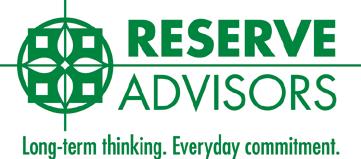
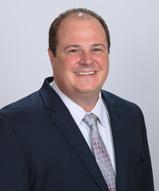
Mr. Kuisle is responsible for the overall management and administration of the firm’s Southeast regional team. Reserve Advisors is a leading provider of reserve study consulting services, having conducted over 30,000 reserve studies. Mr. Kuisle is a frequent speaker and author and a Florida-licensed Continuing Education Provider for Community Association Managers. He serves on the Community Associations Institute (CAI) National Business Partner Council, CAI National Board of Trustees and as a council member with the Florida Legislative Alliance (CAI-FLA). Mr. Kuisle is a Professional Engineer, licensed in Florida since 2006 and also holds both the Reserve Specialist (RS) and Professional Reserve Analyst (PRA) Designations. He is also the Treasurer of his condominium association in Tampa, Florida where he has served on the board for 15 years.

Community
Management Services with a local presence.

With a dedicated, close-knit staff that lives—and works—in the communities we serve, Association Services of Florida offers a comprehensive suite of services you simply won’t find anywhere else:
• Local team. Our Miramar office has been open for over 40 years, providing communities with South Florida-based community management professionals.
• Financial solutions. Get help with GAAP compliance, timely reporting, budget preparation, and financial planning from an onsite client accounting team.
• Fast communication. Our local presence allows quick responses when you need us most.
• Technology solutions. Enjoy proprietary, comprehensive community management software, and TownSq, the all-in-one app for managed communities.
• And so much more!
Partner with us today!
Luis Rodriguez | Business Development Manager | 786.505.5811 |luis.rodriguez@associaflorida.com
www.associaflorida.com
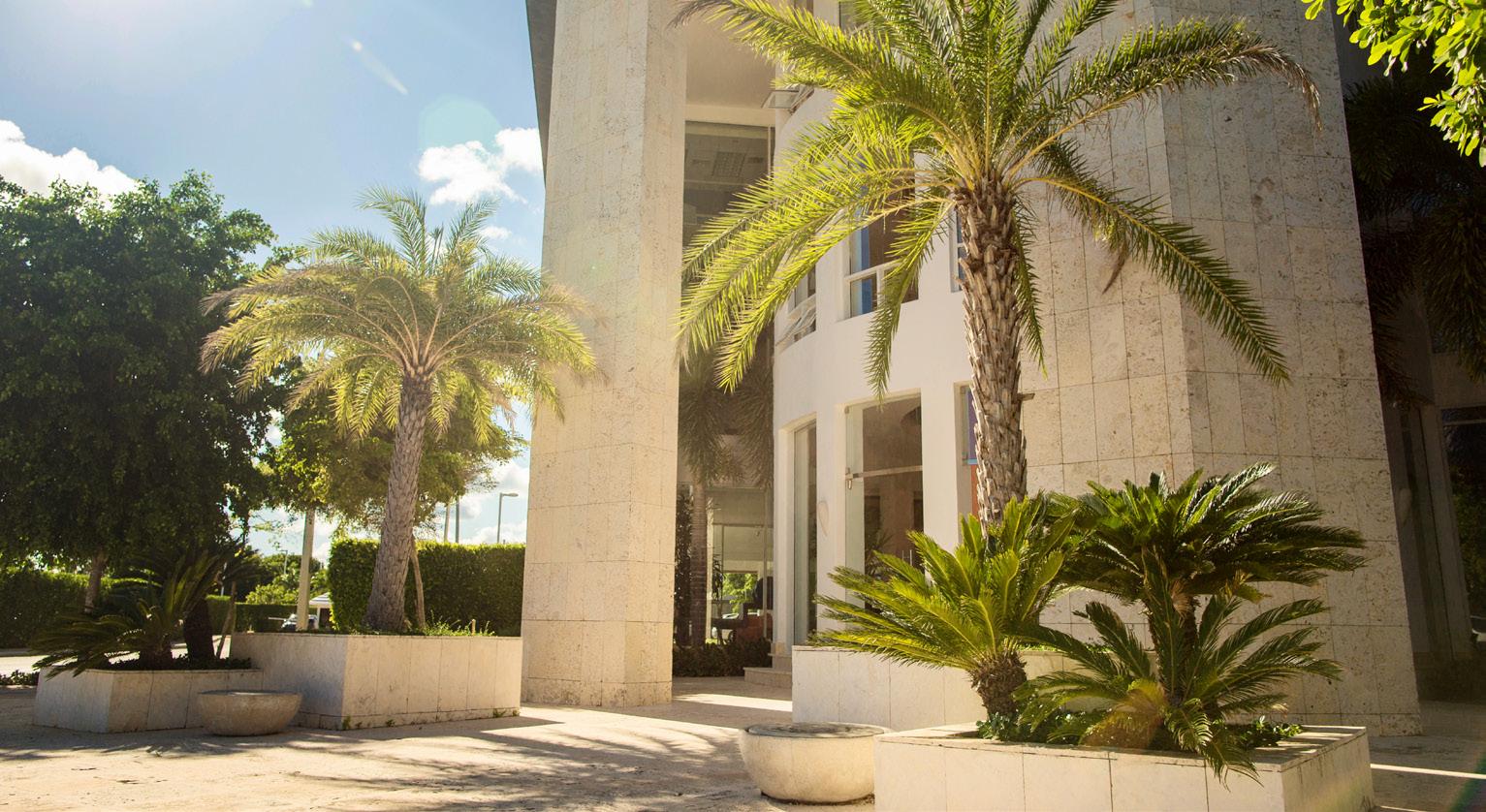
When the Stakes Are High: A Property Manager’s Guide to Commercial Roofing Contractors
BY MARC SEGAL, OWNER OF RAINBOW ROOFING SOLUTIONS, LLC
The emergency call came at 6:47 a.m. on Tuesday. David Martinez, property manager for Riverside Business Plaza, barely had time for coffee before his phone rang. “Water is pouring into the law firm on the third floor,” reported building engineer Michael Torres.
Standing in the rain-soaked lobby hours later, watching expensive office equipment being evacuated, David faced every property manager’s nightmare: catastrophic roof failure during business hours. The 75,000-square-foot complex housed ten businesses and nearly 250 employees. Every hour meant lost revenue and potential liability.
RESISTING THE RUSH
Within hours, three contractors appeared, drawn by news of the emergency. Storm chasers, Michael called them—companies promising quick fixes and insurance expertise.
“The first guy guaranteed watertight repairs by noon,” David recalls. “Cash only, and he’d handle all insurance paperwork.” The pressure
was intense. Residents demanded answers, the owner fielded angry calls, and every delay meant more damage. But David remembered a colleague’s expensive lesson about a contractor who promised everything and delivered disaster. Emergency or not, you can’t skip due diligence on commercial projects. Instead of accepting the first offer, David implemented temporary containment and began methodically searching for qualified help.
COMMERCIAL COMPLEXITY
David quickly learned commercial roofing operates differently than residential work. His modified bitumen roof system required specialized equipment and expertise many contractors lacked. The building’s HVAC units, electrical systems, and drainage networks demanded knowledge beyond basic roofing.
Jennifer Walsh of Premier Commercial Roofing immediately demonstrated commercial understanding. She identified critical
Continued on page 36


ROOFING
issues others missed, including compromised insulation and drainage problems requiring immediate attention.
“Jennifer didn’t just examine the leak—she evaluated how our roof integrated with other building systems,” David explains.
CREDENTIALS THAT COUNT
Commercial projects required additional credentialing layers. Jennifer provided specialized commercial licensing, substantial liability coverage, and bonding protecting against contractor default. Her manufacturer certifications proved crew training and qualified the building for extended warranties.
Jennifer’s documentation included workers’ compensation for height work, environmental liability for handling old materials, and professional liability for engineering assessments—comprehensive coverage protecting building owner and residents.
THE RESIDENT CHALLENGE
Unlike residential projects where homeowners relocate temporarily, David needed to maintain operations for ten businesses. The accounting firm couldn’t postpone client meetings, the medical practice couldn’t reschedule patients, and the call center operated around the clock.
Jennifer’s proposal demonstrated operational understanding. She outlined phasing strategies minimizing disruption, noise control for sound-sensitive businesses, and containment protecting occupied areas. Her timeline respected business hours and included weather contingencies.
FINANCIAL REALITIES
The $650,000 project required ownership group approval and complex insurance negotiations. Jennifer’s proposal addressed these realities with detailed cost breakdowns, milestone-based payments, and documentation supporting insurance claims. Jennifer also provided performance bonds and lien waivers protecting against contractor default or payment disputes—essential security for large commercial investments.
VERIFICATION PROCESS
David contacted previous clients directly, visiting completed projects and speaking with property managers about Jennifer’s reliability. He investigated Jennifer’s financial stability through credit reports and bonding evaluations, consulting with industry associations and checking references through commercial real estate networks.
PROVEN PERFORMANCE
Jennifer’s crew demonstrated commercial-grade capabilities with specialized equipment including cranes, industrial welding tools, and moisture detection instruments. The team included certified
technicians using infrared imaging and engineers evaluating structural capacity. When severe weather threatened the partially completed roof, Jennifer’s crisis management skills shone. She implemented emergency protocols protecting building and operations, coordinating with security, residents, and emergency services.
LONG-TERM VALUE
Six months later, Jennifer provides annual inspections, maintains detailed system records, and serves as a planning resource. “She understands commercial roofing is about relationships, not just projects,” David observes.
THE LESSON
David’s experience teaches that commercial projects require contractors with specialized expertise, substantial resources, and operational understanding. “Emergency situations make contractor selection more critical, not less,” he explains. “Pressure to act quickly can create expensive mistakes.”
His methodical approach—verifying commercial credentials, investigating relevant experience, evaluating operational understanding—delivered success exceeding resident expectations. For property managers facing roofing challenges, David’s journey proves that thorough contractor evaluation creates value extending far beyond individual projects, establishing partnerships essential for long-term property management success.


Marc Segal brings four decades of roofing expertise as Owner of Rainbow Roofing Solutions, LLC. Since entering the industry in 1985, Segal has built his career on hands-on experience and technical knowledge, beginning as a laborer with his father’s Canadian business. Following his father’s passing in 2005, Segal obtained his contractor’s license and established Rainbow Roofing Solutions as a commercial roofing leader throughout South Florida. He specialized in TPO roofing systems, becoming South Florida’s largest TPO installer. Segal teaches continuing education courses for the Department of Business and Professional Regulations and maintains membership in RCSAF, FRSA, CAI, BOMA, and SEFAA. His business philosophy centers on relationship-building, approaching every interaction as an opportunity to build lasting partnerships.
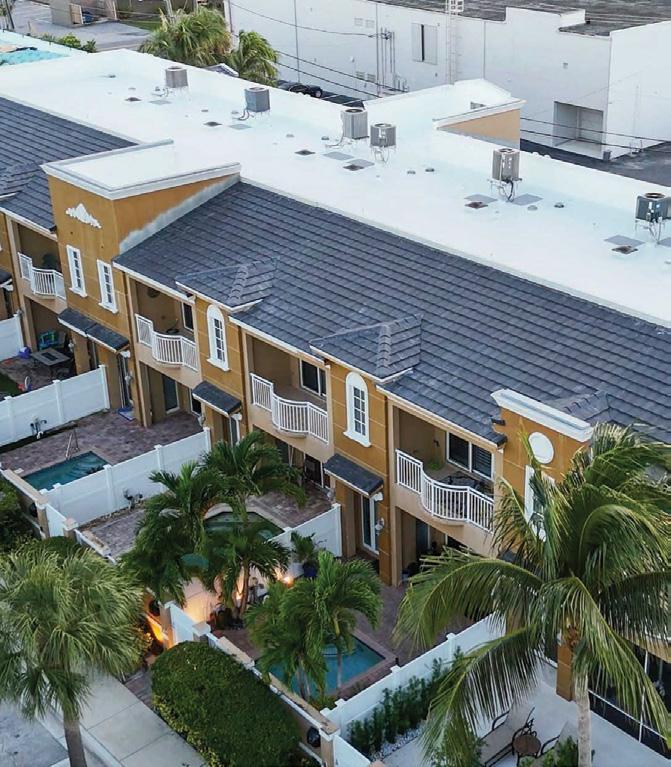








Preparing for the Federal Reserve’s Interest Rate Cuts: A Guide for Community Associations
BY NICO F. MARCH, FOUNDER & MANAGING DIRECTOR, THE MARCH GROUP
Asthe Federal Reserve gears up to potentially lower interest rates in September, it is crucial for community associations and their respective boards or finance committees to strategically prepare for economic changes that will soon follow. Lower interest rates can significantly affect financial planning, investments, and community projects. Here are five specific strategies community associations should consider implementing well before the expected rate cut.
1. REVIEW AND ADJUST INVESTMENT STRATEGIES
Community associations often hold reserves in various investment vehicles, including money market funds, which are directly affected by Federal Reserve interest rates. Money market funds typically yield higher returns when interest rates are high. As rates decrease, the returns on these funds will diminish, in some banks, dramatically and quickly.
ACTION STEPS:
Consult with Financial Advisors: Engage with financial advisors knowledgeable in community association finance to review your current investment portfolio. Consider diversifying investments to include U.S. Treasury bonds or FDIC Insured CDs, which might offer better returns in a lower interest rate environment.
Explore Fixed-Income Securities:
Lock in higher rates now by investing in longer-term fixed-income securities before the coming rate cut. This will provide a buffer against decreasing returns from money market funds.



RESERVES

Rebalance Portfolio:
Ensure your investment portfolio aligns with the community’s risk tolerance and financial goals, adjusting asset allocation and liquidity as needed.
2. REFINANCE EXISTING DEBT
If your association has any outstanding loans, lower interest rates present an opportune time to refinance existing loans. Community associations with outstanding debts, or lines of credit (LOC) can benefit from reduced interest expenses, freeing up funds for other projects.
ACTION STEPS
Review Loan Terms: Examine the terms, conditions, and penalty clause of current loans and identify opportunities for refinancing at lower rates.
Negotiate with Lenders:
Approach current lenders to negotiate better terms or shop around for competitive offers from different financial institutions.
Evaluate Cost-Benefit:
Conduct a cost-benefit analysis to ensure that the savings from lower interest payments outweigh any refinancing or premature withdrawal
costs. Most institutions have a penalty clause written in the initial loan agreement that precludes you from refinancing at another institution by implementing a substantial fee.
3. RE-EVALUATE YOUR UPCOMING CAPITAL IMPROVEMENT PROJECTS
With the potential decrease in borrowing costs, now could be an excellent time for community associations to accelerate and/or finance some upcoming capital/reserve improvement projects. Whether it is renovating common areas, upgrading facilities, or investing in new amenities, lower interest rates make borrowing more attractive.
ACTION STEPS
Identify Priority Projects:
Collaborate with your management team, reserve study, and community members to find and prioritize improvement projects that will enhance property values and quality of life.
Re-Create a Budget:
Develop a new detailed budget for each expected project, considering all associated costs, including return on investment and potential financing.
Secure Financing:
Rather than the dreaded “special assessment” consider the financial and political advantage of lower interest rates to potentially secure financing for these projects, ensuring the terms align with the community’s financial plan.
In certain situations, securing a Line of Credit or Term Loan may allow the board to simply raise dues a small amount each year and pay off the loan, as well as keep the owners happy by not having to special assess or raise maintenance fees exorbitantly.
4. STRENGTHEN RESERVE FUNDS
While money market fund returns are likely to decrease soon, keeping a robust reserve fund is still essential for long-term financial health. A well-funded reserve can mitigate the impact of lower returns and provide a safety net for unexpected expenses.
ACTION STEPS
Increase Contributions:
As a former board member, I know it’s sacrilege to mention, yet consider increasing the contribution rate to reserve funds to offset expected lower returns. If it is a slight increase each year the owners are more apt to accept this, versus large increases every few years.
Regular Assessments:
Conduct regular assessment reviews to ensure the reserve fund is
Continued on page 41
adequately funded and aligned with the association’s future needs. Especially in Florida, where next year, 2025, new infrastructure reserve requirements go into effect.
Explore Alternative Investments:
Look for stable, higher-yield alternatives to money market funds that still align with the community’s risk tolerance.
5. EDUCATE AND COMMUNICATE WITH COMMUNITY MEMBERS
In this author’s opinion, the most important task of the board is transparent communication. This step is vital to ensure that all community members understand the potential impacts of changing interest rates, lower returns, and the association’s plans to address them. Keeping members informed fosters trust and cooperation.
ACTION STEPS
Host Informational Meetings:
Organize meetings or simply add a section to the board or annual meeting to discuss the expected rate cuts, their impact on the community’s finances, and planned actions.
Regular Updates:
Provide regular updates through discussions with your Financial Advisor, newsletters, emails, or the association’s website to keep members informed about financial decisions and progress on projects.
Encourage Feedback:
Create opportunities for community members to provide input and ask questions about financial strategies and upcoming projects.
UNDERSTANDING MONEY MARKET FUNDS AND FED RATES
Money market funds are a popular investment choice for their liquidity and relatively minimal risk. There are hundreds of money market funds available today, some of which can actually put the principal at risk. This is one reason you see some money market funds offering much higher returns than others. There have been several instances in the recent past where money market funds have “broken the buck” or lost value, (under $1.00 per share) due to having other investment vehicles in the fund that were riskier than U.S. government or federally insured vehicles. Most of these funds invest in short-term, high-quality debt instruments and all are intricately linked to Federal Reserve interest rates. When the Fed raises rates, money market fund returns typically increase, providing higher yields to investors. Conversely, when the Fed lowers rates, returns on these funds decrease.
IMPACT OF LOWER FED RATES ON MONEY
MARKET
FUNDS
Decreased Yields:
Investors will see lower yields on money market funds as interest
RESERVES
rates fall. This reduction can affect the income generated from these investments, affecting overall returns for community associations.
Liquidity Considerations:
Despite lower yields, money market funds still offer high liquidity, making them suitable for short-term financial needs. Associations should weigh the trade-off between yield and liquidity when adjusting their investment strategies. We normally recommend only very shortterm expenditures (i.e., 30-day Operating expenses) use a money market fund.
CONCLUSION
The expected lowering of interest rates by the Federal Reserve presents both challenges and opportunities for community associations. By proactively reviewing and adjusting investment strategies, refinancing existing debt, planning capital improvements, strengthening reserve fund balances, and maintaining transparent communication with community members, associations and their respective boards can navigate these changes effectively.
Understanding the relationship between Fed rates and money market fund returns is crucial for making informed financial decisions. Preparing now will position your community association for financial stability and future success in a lower interest rate environment.


Nico F. March is the Managing Director for The March Group, LLC. He has worked with Community Associations since 1974 and has served on several Boards, including the Board of Directors for the Community Association Institute (CAI), San Diego Chapter. His team has specialized in Corporate Cash and Association Financial Management since 1982 and has assisted Associations, Nonprofits and Timeshares invest in reserve, operating, reconstruction, and SIRS funds. Nico and his team work out of their San Diego and Wyoming offices and may be reached at 888.811.6501 or email nico@themarchgroup.com for further information and consultations. The March Group is not a tax or legal advisor. We will be glad to work with your professional CPA and Attorney to help you with your financial goals. Neither the information contained herein, nor any opinion expressed shall be construed to constitute an offer to sell or a solicitation to buy any securities mentioned herein. Nico March is a registered representative with, and securities are offered through LPL Financial, Member FINRA/SIPC. The opinions voiced in this material are for general information only and are not intended to provide specific advice or recommendations for any individual or organization.

Why HOA Elections Shouldn’t Last More Than Three Weeks
BY ARTURO AGÜERO, CEO AND CO-FOUNDER OF VOTINGPRO & PROTOS TECHNOLOGY
TIMING MATTERS MORE THAN YOU THINK
When planning an HOA or condominium election, many boards assume that keeping the election open for a month—or even longer— will encourage participation. After all, more time means more chances to vote, right?
However, a 2024 elections analysis shows the opposite: elections lasting longer than 3 weeks often stall in participation. Homeowners receive too many reminders, lose focus, and engagement begins to drop. In contrast, elections that last between 2 and 3 weeks consistently secure quorum without overloading residents.
THE RISK OF LONG ELECTIONS
Extending an election beyond 3 weeks may sound convenient, but the data tells another story:
• Participation stalls – Most votes are cast in the first 10 days. After that, reminders lose their effect.
• Email fatigue – Frequent reminders over a month can
overwhelm residents, leading them to disengage.
• Unnecessary delays – Extending the timeline rarely changes the outcome but increases administrative work.
In contrast, early planners often reached quorum with ease.
THE 2–3 WEEK SWEET SPOT
Studies and recent election data show that 2 to 3 weeks is the ideal election window. This timeframe:
• Gives homeowners enough flexibility to vote.
• Keeps communication consistent but not overwhelming.
• Maintains momentum so participation doesn’t plateau.
This aligns with our previous analysis on reminders, which showed that communication works best when it’s focused and timely—not stretched endlessly.
Continued on page 44



ELECTIONS
WHAT THE DATA SHOWS: AN EXAMPLE
The chart below illustrates one of the elections reviewed in 2025.

HOA election participation drops after the first week when voting remains open for more than 3 weeks.
• The highest number of votes occurred in the first few days after the election opened.
• A second, smaller spike happened after a reminder in week two.
• After that, participation flatlined, even though the election stayed open for weeks longer.
This demonstrates that extending election length doesn’t improve results—in fact, it often reduces urgency.
BEST PRACTICES FOR HOA ELECTION TIMELINES
KEEP ELECTIONS BETWEEN 14–21 DAYS
Long enough to be flexible, short enough to maintain urgency.
PLAN COMMUNICATIONS
STRATEGICALLY
An opening notice, one mid-election reminder, and one final-day reminder is usually enough.
AVOID UNNECESSARY EXTENSIONS
If quorum isn’t reached after 3 weeks, more time won’t fix the issue. Instead, focus on stronger communication and engagement next cycle.
SHORTER ELECTIONS, STRONGER RESULTS
Election length can make or break participation. The data is clear: 2 to 3 weeks is the optimal timeline to maximize turnout, avoid email fatigue, and ensure smoother results.
Communities don’t need long, drawn-out elections — they need well-structured ones. By keeping timelines tight, boards can strengthen engagement and run elections that truly reflect their community’s voice.

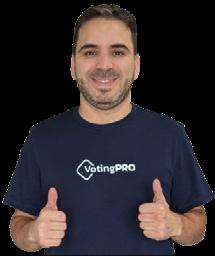
Arturo Agüero is the CEO and co-founder of VotingPRO and Protos Technology, a software development company based in Florida. He has led the design and implementation of secure digital voting systems for homeowners associations, condominiums, and even national-level presidential elections. With a background that blends business strategy and technology, Arturo focuses on making complex voting processes simple, transparent, and accessible for communities across the country.


MILESTONE INSPECTIONS
Preserving Building Integrity


We
Our

